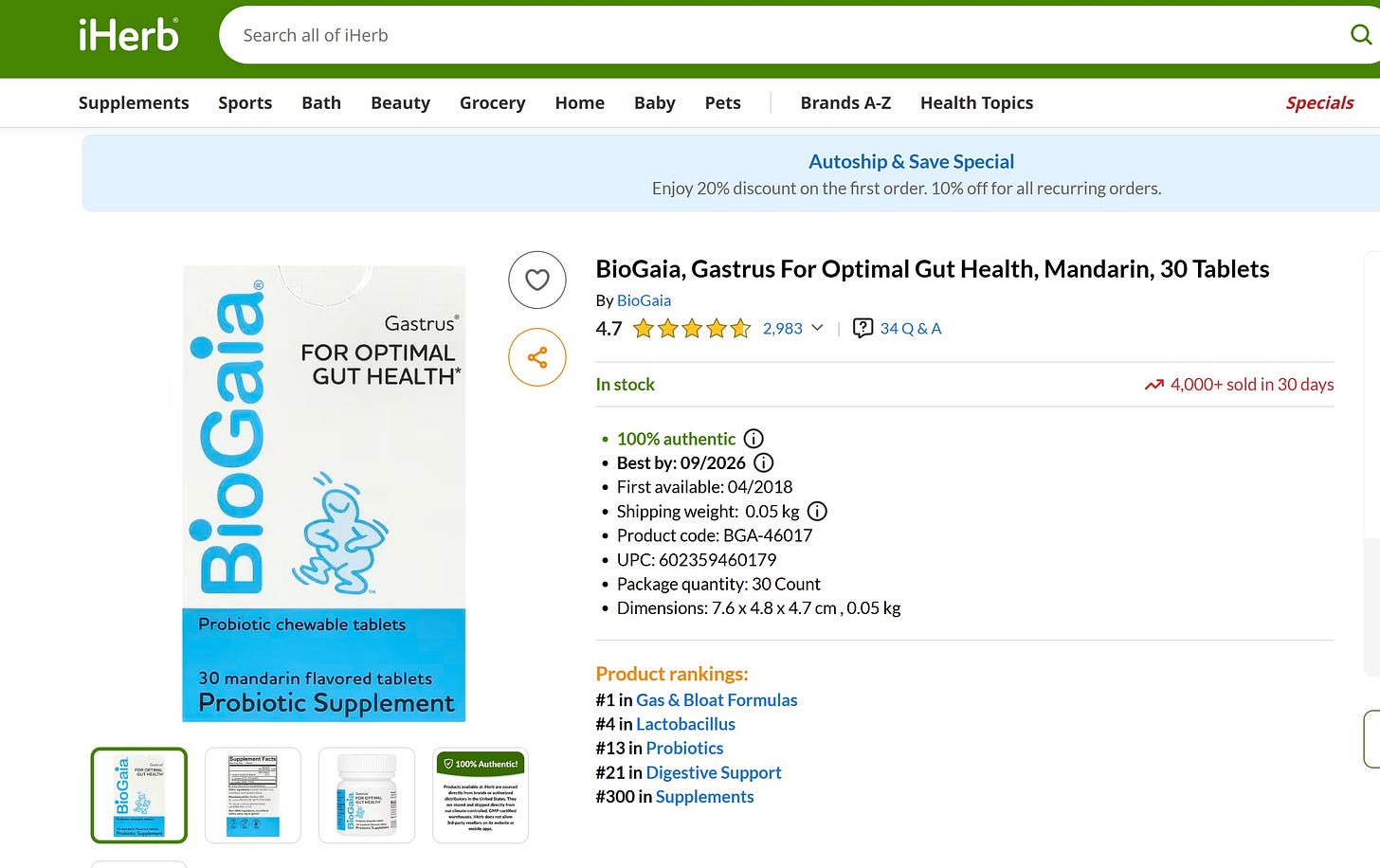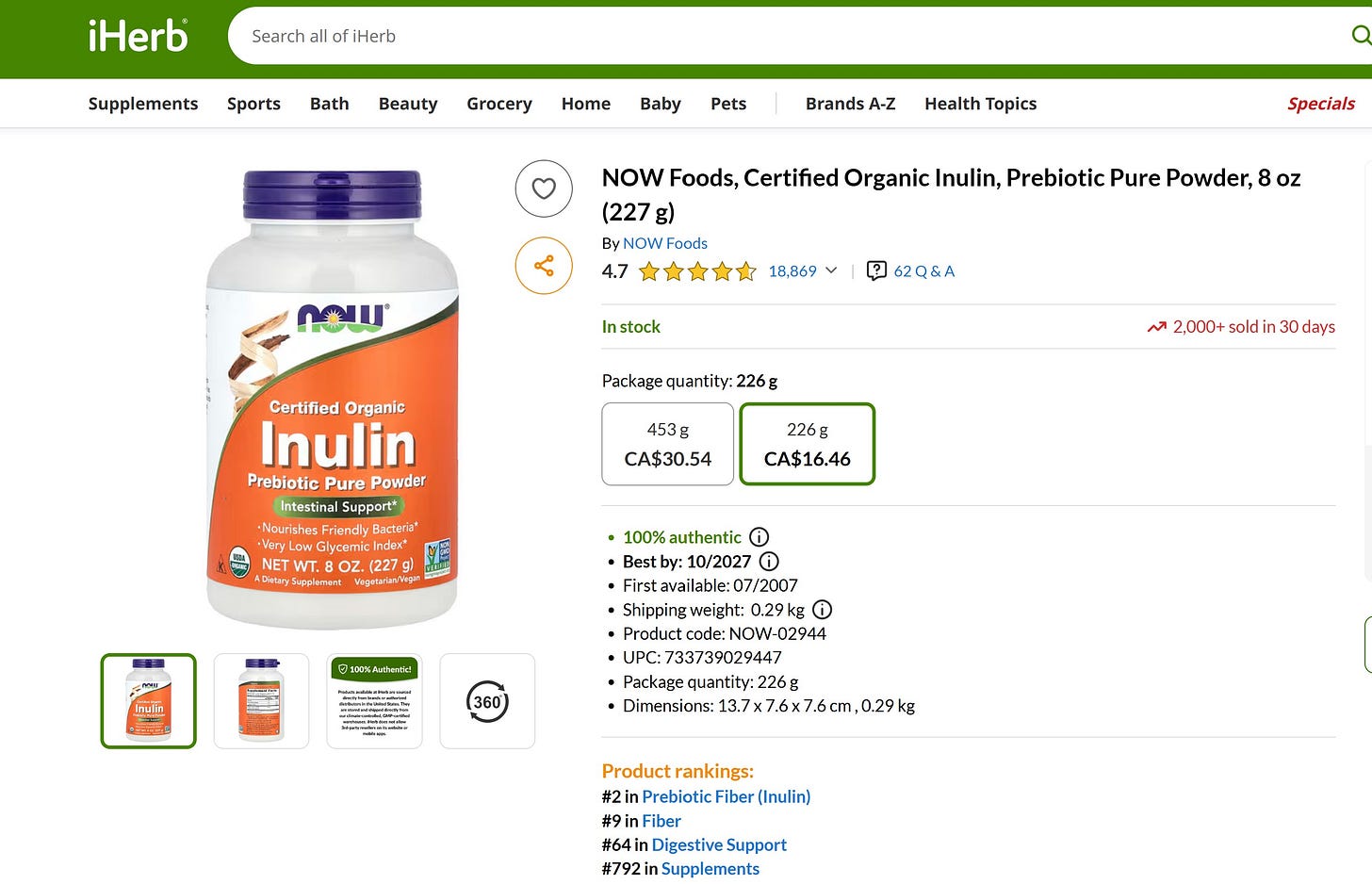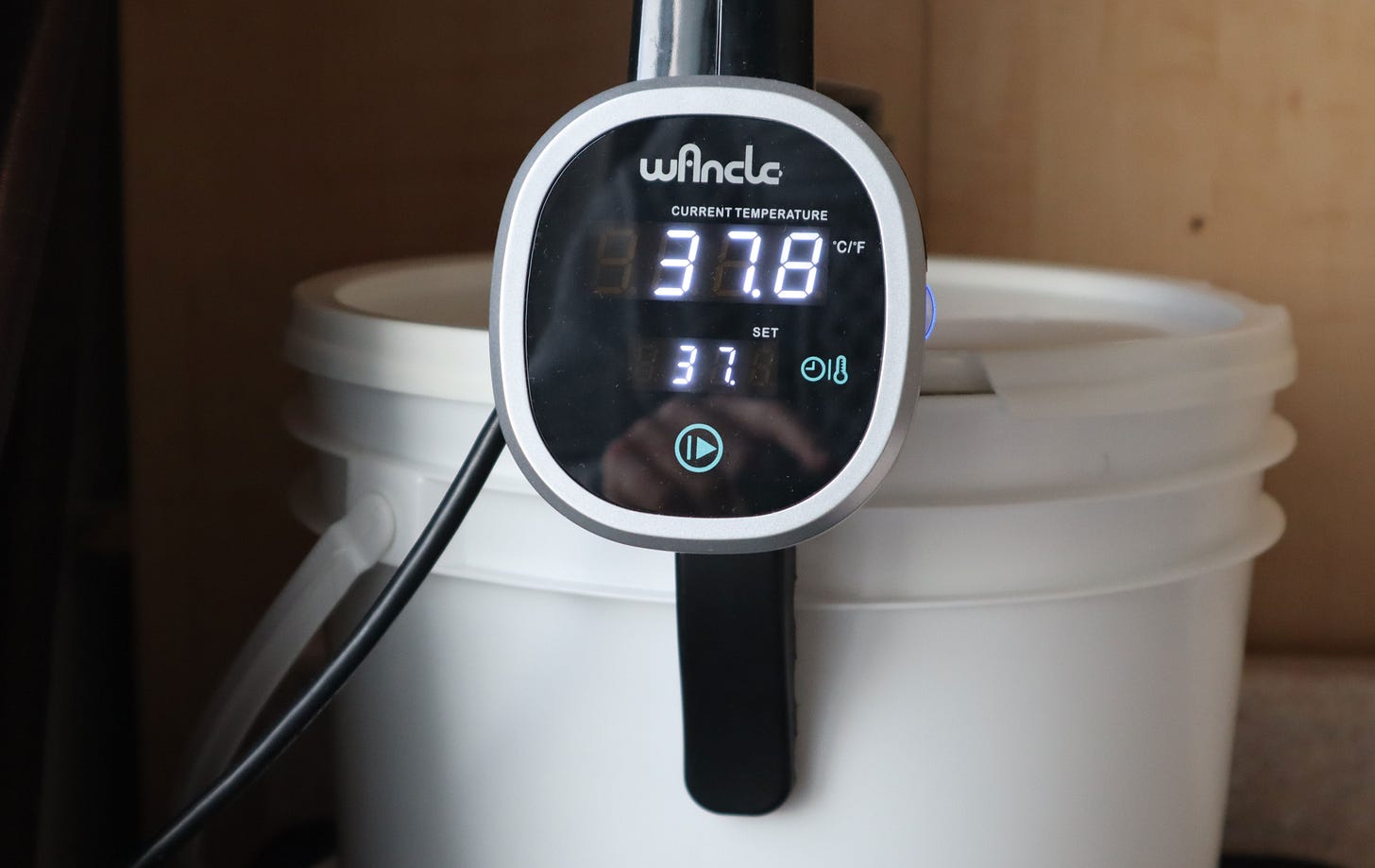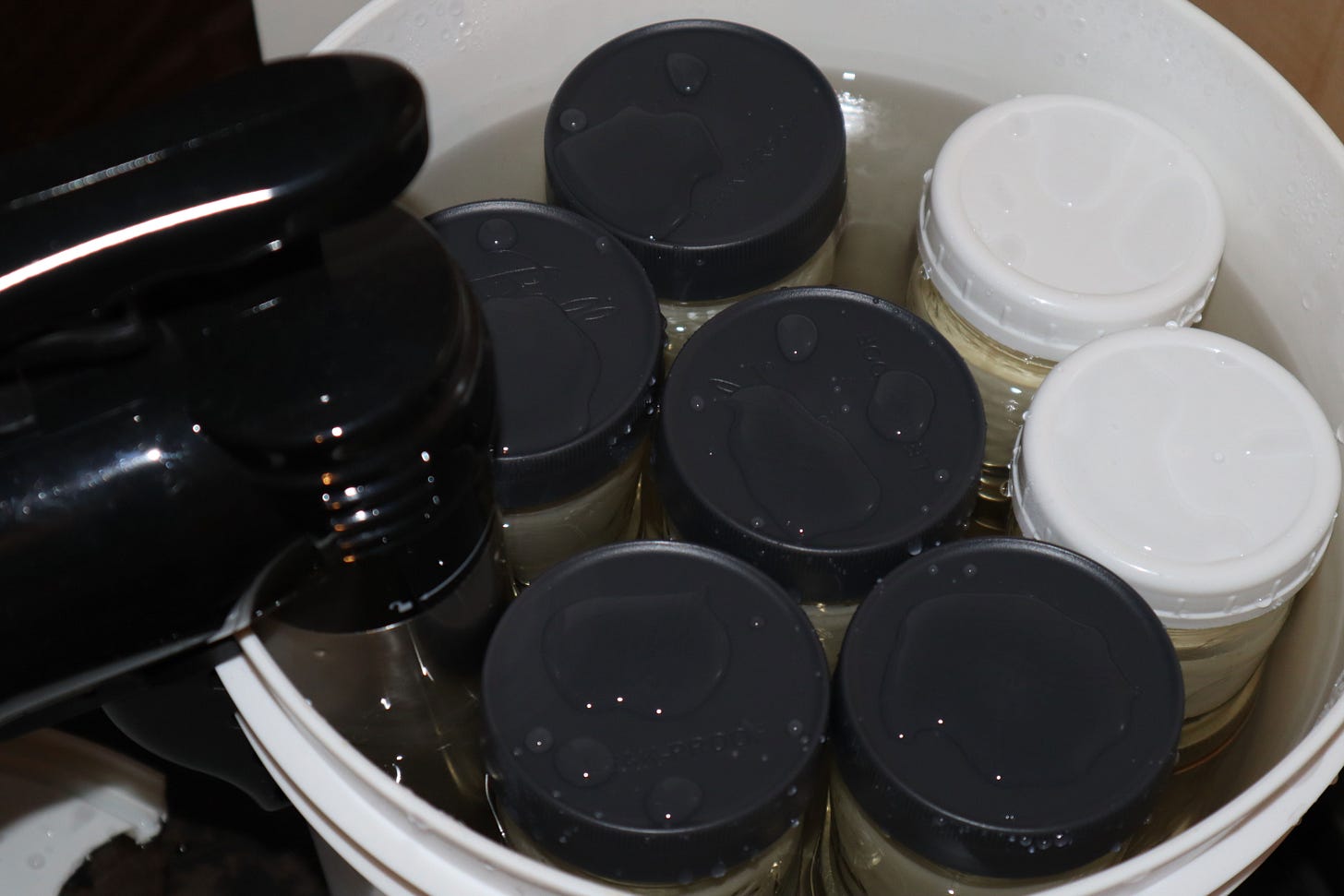The Propagation and Benefits of L. reuteri
Learn how to make L. reuteri yoghurt for gut health, mood improvement, and overall wellness. Simple recipe, scientific insights, and personal tips included.
TL;DR:
This article outlines my personal experience cultivating and consuming L. reuteri yoghurt, a probiotic cultured milk product that may offer various health benefits. The process involves combining crushed L. reuteri tablets, inulin (a prebiotic), and whole milk and fermenting the mixture at 37.8°C for 36 hours. The yoghurt is simple to make, and once established, the culture can be propagated without additional tablets. Scientific studies suggest L. reuteri supports gut health, reduces inflammation, and influences the gut-brain axis, potentially improving mood through serotonin and oxytocin production.
Cultivating L Reuteri
I’m always looking for ways to improve my family’s health. Recently, I started experimenting with making and eating a probiotic cultured milk product using the bacteria Limosilactobacillus reuteri (also known as Lactobacillus reuteri). It looks and tastes like regular yoghurt, but technically, a traditional yoghurt is defined by the presence of two bacterial strains: Lactobacillus delbrueckii subsp. bulgaricus and Streptococcus thermophilus. However, as a shorthand in this article, I’ll call my L. reuteri probiotic cultured milk product ‘yoghurt’.
I will talk about the science and proposed health benefits of this special yoghurt later in the article, but first, I’ll start with the basic cultivation of the bacteria. The process is actually very simple and takes less than 5 minutes to make a batch.
Making TL;DR:
Ingredients and Tools:
10 L. reuteri tablets (crushed into powder)
2 tablespoons of inulin (a prebiotic fibre)
1 litre of regular whole milk (3.25% fat)
Clean mason jars with lids
A sous-vide machine or yoghurt maker (set to 37.8°C/100°F)
Steps:
Heat the milk gently until it’s warm (somewhere between room temperature and body temperature). Cold milk might also work, but I haven’t tried it.
Mix the crushed L. reuteri tablets with the inulin to form a powder base.
Gradually whisk the warm milk into the powder mixture to create a smooth blend.
Pour the mixture into sterilized mason jars, sealing them with lids.
Place the jars in a water bath heated to 37.8°C (or use a yoghurt maker).
Let them ferment for 36 hours.
After 36 Hours:
The yoghurt may separate slightly; this is normal for the first batch. Stir gently before eating.
Use one jar from this batch to start the next batch by mixing it with milk and inulin.
Tips for Success:
Keep jars and tools sterilized to avoid contamination.
Make sure your water bath or yoghurt maker maintains the correct temperature.
Lengthy explanation:
I bought the original culture as tablets. They are about $1 per tablet, but once you have established your culture, you may not have to use them again. I’ve made several generations of this ‘yoghurt’ now without any original starter tablets. There are methods for propagating the culture indefinitely, but I’ll discuss these in a future article if my readers are interested.
I crushed 10 of these tablets and added the powder to 2 tablespoons of inulin, which provides food and medium for the bacteria in the initial making process and later its survival in the gut. Prebiotics like inulin consist of non-digestible fibres that gut bacteria can ferment into short-chain fatty acids (SCFAs), further supporting gut health.
I then gently heated 1 litre of regular milk in the microwave oven for 90 seconds to give the bacteria a warmer start; I didn’t use a thermometer, but I guess the temperature was somewhere between room temperature and body temperature. Some people heat their milk to higher temperatures and then let it cool to optimal fermentation temperature before adding to the bacteria because they like a really thick yoghurt. When milk is heated to a high temperature (usually around 82–85°C) for several minutes, the proteins—especially whey proteins like lactoglobulin—denature and unravel. These denatured proteins interact with casein (another milk protein) during fermentation, forming a stronger, more cohesive gel network. This results in a thicker yoghurt. Also, heating reduces the amount of free whey (the liquid that can separate from the yoghurt). This happens because the proteins coagulate more effectively and bind water within the gel, preventing it from "weeping." Also, this process will evaporate some water, concentrating the milk solids. Higher milk solid content contributes to a thicker final product. Finally, heating milk to high temperatures kills unwanted bacteria and inactivates enzymes that could interfere with fermentation. This creates a more controlled environment for the fermentation process and ensures that your starter culture thrives without competition.
I find my final product already has a normal consistency of yoghurt, so I don’t bother with the high heat step. My aim is to make this whole process as quick and simple as possible. I suspect that even if I used cold milk, it would just take a little longer to work. I may try this another time.
I used the cheapest regular pasteurised and homogenized 3.25% fat milk that is most common here in Canada. I’m lactose intolerant, but it was necessary to use milk with lactose because L. reuteri feeds off the lactose. I assume that most of the lactose was consumed in my process because I didn’t react badly to the final product. Some people who want a really thick yoghurt use more cream in their product.
I poured the litre of milk very gradually into the L. reuteri/inulin powder in a glass measuring jug, first making a paste and then slowly adding the rest. Then I poured the mixture from the glass measuring jug into 7 regular 8oz/250ml mason jars. These were then placed in a water bath kept at a constant 37.8°C temperature for 36 hours. I already had a wankle sous-vide ($50 USD) from earlier experiments with pasteurizing eggs for homemade mayonnaise, so I used that, attached to a bucket I had previously used to store honey:
The jars had to sit fairly high in the bucket, so I first made a layer of water-filled glass jars with lids on in the base of the bucket on which to sit the top layer of yoghurt-filled mason jars.
This gave me the depth of water required to meet the minimum water height requirements of the sous-vide heater and have the water reach nearly to the top of the yoghurt-filled mason jars to provide all-round warmth. I also used the bucket lid to avoid evaporation of the water - I just cut out a hole for the sous-vide heater:
Thirty-six hours later, I removed the jars and found that the ‘yoghurt’ had separated, with a thin whey liquid at the bottom of the jars. This is quite normal on the first batch. We ate this mixture from six of the pots and then added the contents of the seventh pot to a couple more tablespoons of inulin and a litre of milk and started the whole process again. I use a whole pot of the culture and not just a couple of tablespoons worth, as some recommend. The next batch had perfect yoghurt consistency and no separation, and every batch has been the same since.
I will add that we sterilize the jars in a saucepan of boiling water for 10 minutes before use so that the L. reuteri does not have to compete with a load of bad bacteria.
I like to use these plastic lids from Ball for the tops of the mason jars.
If you buy a ‘yoghurt maker’ machine, you will need one that allows you to dial in the exact temperature of 37.8°C and leave it running for 36 hours. I suspect that one of the reasons people fail in the production of the L. reuteri is that their yoghurt maker machines fail to keep the required temperature.
How important is L. reuteri?
L. reuteri should be found naturally in the human body; however, it is believed by Dr William Davis (Super Gut) and others that antibiotics have killed off L. reuteri in people’s bodies and that many of our modern diseases can be traced to a lack of this essential bacteria. In particular, Davis suggests that the widespread loss of L. reuteri may contribute to the proliferation of Small Intestinal Bacterial Overgrowth (SIBO), as L. reuteri is no longer "policing" the upper gastrointestinal tract. If my readers are interested, I will write a summary/review of Super Gut.
In 1993, a group of Swedish scientists found that only 4% of the subjects in their study had harboured L. reuteri on the mucosa of the digestive tract. Other research suggests that the prevalence of L. reuteri in humans was much higher in the mid-20th century. Gerhard Reuter and Tomonari Mitsuoka, who extensively studied the Lactobacillus biota of the human digestive tract during the 1960s and 1970s, reported that L. reuteri was then one of the dominant lactobacilli and regularly detected.
There is some evidence that the prevalence of L. reuteri in human fecal samples was higher in the middle of the past century. Gerhard Reuter and Tomonari Mitsuoka, who in the 1960s and 1970s intensively studied the Lactobacillus biota of the human digestive tract, reported that L. reuteri was then one of the dominant lactobacilli and regularly detected.
Over the past decade, there has been a huge increase in interest in L. reuteri, with more than a thousand papers published. I found this review article from 2018 gave a good general introduction, although there have been hundreds of papers published since then:
Here’s a very brief summary of what this review paper found about L. reuteri and its benefits:
Gut Health and Digestion:
Produces antimicrobial compounds (reuterin, organic acids) to inhibit pathogens.
Supports gut microbiota balance and intestinal barrier integrity, reducing leaky gut and inflammation.
Improves nutrient absorption and aids digestion through bile salt metabolism.
Immune System Modulation:
Enhances regulatory T cell (Treg) development and suppresses pro-inflammatory cytokines.
Helps in managing inflammatory diseases like colitis and systemic lupus erythematosus (SLE).
Potential antiviral, antifungal, and antibacterial effects against pathogens like H. pylori, E. coli, and Candida species.
Neurological and Psychological Benefits:
Produces gamma-aminobutyric acid (GABA), which may affect mood and stress responses.
Potentially restores social behaviours in autism spectrum models by boosting oxytocin production.
Disease Prevention and Management:
It helps reduce infant colic symptoms, diarrhoea, and functional abdominal pain.
Supports weight management and may reduce obesity-related markers (strain-specific).
Promotes oral, vaginal, and systemic health by modulating microbiota in these areas.
Nutritional Contributions:
Produces vitamins like B12 and folate, essential for various metabolic and developmental processes.
Potential in Early-Life Disorders:
Benefits infant gut microbiota, reduces colic symptoms, and alleviates atopic dermatitis in children.
Stress Resilience and Infection Control:
Reverses stress-induced gut microbiota imbalances and protects against enteric infections.
It’s too early to tell how much my family’s health has improved from just a couple of weeks of eating the L. reuteri yoghurt. One thing I felt almost immediately was what seemed like a mood improvement, which could be linked to increased serotonin production. L. reuteri has been shown in scientific studies to modulate serotonin levels.
A study published in the Journal of Psychiatric Research investigated the effects of L. reuteri on mice subjected to chronic social defeat stress. The findings revealed that oral administration of L. reuteri ameliorated depressive-like behaviours and normalized serotonin metabolism alterations induced by stress, at least in mice.
Other research indicates that L. reuteri can modulate the expression of the serotonin transporter, which is responsible for reabsorbing serotonin into cells after its release. This modulation suggests that L. reuteri may influence serotonin availability in the gut, thereby affecting mood and mental health via the gut-brain axis.
Approximately 90% of the body's serotonin is produced in the gut by enterochromaffin cells, a process significantly influenced by the gut microbiome. Certain metabolites produced by gut bacteria, including L. reuteri, can stimulate serotonin production, thereby impacting mood and overall mental health.
L. reuteri has been shown to produce various neuroactive compounds, including indole derivatives and short-chain fatty acids (SCFAs), which can stimulate gut cells to release more serotonin. Additionally, L. reuteri reduces inflammation in the gut, which can indirectly improve serotonin signalling.
In terms of generally good mental health, I also expect to benefit from the fact that L. reuteri influences the secretion of oxytocin from intestinal cells. In a future article, I will write in-depth about “Psychobiotics”—the probiotics, like L. reuteri, that affect brain function and mental health.
If you decide to make this L. reuteri yoghurt, I’d love to hear about your experience. Did you notice any health benefits? Feel free to share your results or any tips you discovered along the way.
Part Two in this L. reuteri series coming soon.
Update: My old sous vide heater got a bit too noisy, so I got a new one. I tested the new one with a watt meter and it only uses 3 watts of electricity to keep the yoghurt at the correct temperature.












Update: I got a watt meter because I was concerned that the sous vide heater (rated at 1000 watts) might be too expensive to run. I found that at the low temperature of 37.8C, it only uses about 17 watts most of the time. I used about 1.5 kw/h over the 36 hours, and this worked out at 30 cents for a whole batch of yoghurt at Nova Scotia electricity prices.